Genre: Action Developer: Tiertex Publisher: Sega Ent. Players: 1 Released: 1991
You may not know it by name, but chances are you’ve heard “Raid!” It’s generally considered Strider Hiryu’s theme song, he of the Capcom arcade hit Strider, and you hear it once you land in St. Petersburg to start the adventure. “Raid!” was remade for Hiryu’s appearance in Marvel vs. Capcom as well as 2014’s reboot/remake/whatever of the original game. It’s such a fantastic song and just the opener of what I consider the best soundtrack to ever grace a video game. From eerie chimes punctuated by bursts of electricity to the tribal drums of the Amazon, Strider‘s soundtrack frames each individual moment in the game amazingly well and is a true tour de force. Other games may have great music, but none so vividly embody the on-screen action the way Strider‘s soundtrack does.
It would then be obvious to anyone familiar with the game how disappointing the Sega Master System version of Strider is to anyone familiar with the arcade or excellent Genesis port. SMS Strider‘s soundtrack consists solely of “Raid!” I wish I was being hyperbolic, but I’m not. Storming Kazakh? “Raid!” Pushing through the snow-covered mountain base? “Raid!” Infiltrating the floating fortress? “Raid!” Slashing through the Amazon jungle? Um… How about more “Raid!?” To be fair, there is another song which plays during some boss encounters, but it’s still makes for a dismal listening experience. I understand trying to get the arcade Strider to fit on a Master System cartridge is going to result in some sacrifices, but providing just one song for every single stage is ridiculous. It’s an iconic song, but it’s also too much, especially when paired with the SN76489. The SMS sound chip has no business trying to reproduce the mix of deep base notes, electric guitar, synthesizers, bell tones, and trumpets which fill the song, leaving behind a bloodied and shrill corpse in its wake. I blame the rendition for my having to pop some Tylenol after each play session, and it’s too bad the game couldn’t at least offer FM support. We’d still just have the one song, but maybe then it would have been listenable.
Strider scaled down to the Genesis quite well, but I can’t say the same for this abortive attempt. Beyond the horrible soundtrack, the 8-bit Strider only achieves a passing resemblance to its source. While the graphics aim to invoke the look of the locales, the big problem is that they just cannot capture the spirit and feeling of the game due to the way everything is crudely patched together and the complete lack of action which made Strider such a hit in the first place. Picture it: Sicily, 1989. You enter an arcade and put a quarter into Strider. You take control of blue future ninja guy Hiryu and find yourself running across a rooftop; slashing soldiers, little robot raccoons, and flying drones along the way before leaping to the next building with its own layout and obstacles. After dodging turret fire and escaping a booby-trapped ceiling, another desperate jump finds you facing the game’s first mini-boss, the muscle man Strobaya. When he dies, flames rain from the ceiling, leaving you nowhere to go but up, climbing up more girders and now having to contend with large bipedal robots on top of everything else. Up and over this next roof leads Hiryu to the second mini-boss, Novo, a jukebox with a laser defense system. Defeating it reveals a hidden passage guarded by a soldier packing a huge Gatling gun, and then we meet the game’s first boss, Urobolos, a huge robotic centipede. Come on, you’ve seen this thing. It’s an impressive monstrosity and a big motivator for many players to upgrade to the 16-bit system so they could fight that thing at home.
What? You didn’t have enough money to experience HIGH DEFINITION GRAPHICS? Sucks to be you. Enjoy your occasional one or two enemies per section. I count five total enemies – a mix of soldiers and drones – before reaching Strobaya. (There’s roughly three dozen across that same stretch in the arcade or Genesis versions of the game.) Whole sections of the game are regulated to ghost towns. It’s just sad. Does Hiryu even qualify as a ninja anymore given how slow he chugs through the game? You trudge through the environments, tangentially reminded of the arcade via a vaguely similar layout and graphics, but there’s just so little to do. No bi-pedal robots or Gatling gun guy to pass along the way. Just mosey on down, dispatch a few more soldiers, and meet up with an Uroboros who looks better suited for a game of Snake than a worthy threat. It just circles the screen, begging to be put out of its misery. The entire game is just weak, and even if I could Eternal Sunshine my memories of the original and Genesis games away, we’d still be left with this pathetic husk of a game.
“Is the game really that bad?” Yes. Yes, it is. It’s not so much that the 8-bit rendition is a watered-down version of an arcade and Genesis classic but rather that watering it down essentially strips Strider of everything it had going for it, sticking us with a dull, ugly experience regardless of its heritage. You know how after you defeat the steel gorilla Mecha Pon in stage two, the head drops and explodes, and Hiryu has to scale a narrow vertical shaft with patrolling saw blades, exiting to a carousel of soldiers and spikes before reaching the mountain top? Well, that’s all gone. SMS Strider leaves Hiryu with just his thoughts as he climbs that shaft, and he only has to fight a soldier or two before exiting. The iconic descent down the mountain? Hiryu just clumsily walks and falls a bit. No landmines are present to push him into second gear. Just plod along to the next vaguely familiar scene with a modicum of action and advance. No lightning. No robots. Climb some parked ships, take out the cruiser’s captain, and call it a day. Don’t worry about the three Kuniang fighters up top. They’re on vacation.
So, what do lucky Master System owners get? Well, you get “Raid!” of course. You also get a theoretically well animated Hiryu sprite. He has separate animation for walking over diagonal walls, and his leaping motion is as flamboyant as ever. In fact, that jump has the same number of animation frames as the 16-bit ones, but unfortunately the slow game speed makes it look clunky, like playing the Genesis game at half speed. I like that his cypher weapon still retains its signature look on the rare occasion there’s an enemy to slash, and I was surprised to see that the in-between level cinema graphics made the cut. They’re not all there, and I don’t understand why the Amazonian is so chatty this go around, chipping in after every single stage, but the scenes are a nice touch… or they would be if they weren’t so ugly looking. The Master System is more than capable of displaying more colors than this. It’s as if Sega contracted asset creation to an artist who only had access to a CGA monitor.
Sega did in fact contract the game out to Tiertex, a substandard UK developer better known for nothing at all. If you’ve familiar with Strider Returns or Turbo OutRun, then you’ve played a Tiertex game. Lucky you. The studio has dozens of mediocre projects to its name, and it’s kind of impressive it got so much work given its track record. As with much of the studio’s portfolio, I’m truly hard pressed to think of anything good to say about this port, and I’ve yet to address Strider‘s substandard control, missing power-ups, excessive slowdown, guesswork collision detection, and prevalent flickering; it’s the total package. As part of the final four US released Sega Master System games, Strider also enjoys the distinction of being a PAL game released for an NTSC audience. Sega famously took advantage of the general compatibility of its NTSC and PAL Master System games, dumping PAL releases onto an unsuspecting US audience with only a US UPC sticker covering up the packaging’s European one. Regardless, the game basically plays the same with no noticeable changes that I can spot. Strider‘s just awful no matter where you’re playing it.
The Sega Master System Strider simply does not respect the limitations of the hardware it’s on. While I can credit Tiertex for including all of the arcade’s stages into the game, it’s difficult to care when those stages are missing so many pieces and are devoid of action. The sense of spectacle and urgency is all but gone, and it becomes difficult to tolerate the game’s many, many faults even without the specter of its arcade namesake looming overhead.
Score: 1 out of 10

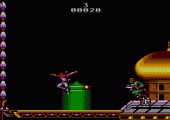
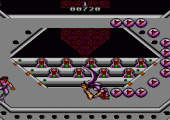
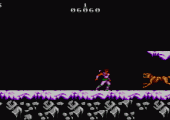
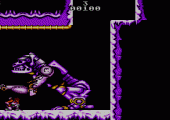
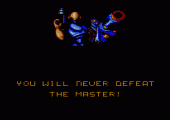
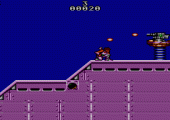
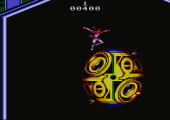
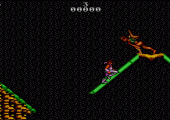
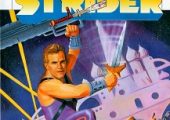
Recent Comments